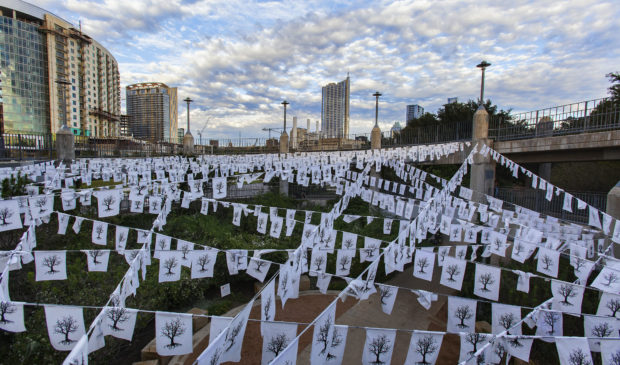Cuts to arts groups brings call for changes to funding mechanism
Tuesday, September 18, 2018 by
Chad Swiatecki Local arts groups facing dramatic cuts in their funding levels from the city could get some relief this budget year, and possibly an earlier heads-up in future budget years if their funding allocations appear headed for a decrease.
The city’s Arts Commission voted 9-0 at Monday’s meeting to reconvene a working group focused on the methodology for determining how the city metes out money for its cultural contracts.
One of the likely actions of that group, which will meet in the next week, will be to recommend to City Council that the 5 percent cushion of total cultural contract money that the commission orders held in reserve to cover possible shortages in transfer payments be made available to the upcoming round of contract recipients. The move could provide up to $565,000 to the $11.4 million in total cultural contract money approved in the most recent budget. That figure is roughly $1 million less than what was given to applicant arts organizations last in the current budget.
The cuts were brought about by a combination of more than 100 new applicants for funding, increased administrative costs and lack of reserves that are typically rolled over from the previous budget year.
City Council was expected to vote on approving the cultural contract allocation at Thursday’s meeting, but that item has been moved to the Oct. 4 agenda, and the issue is expected to be discussed during Tuesday’s work session.
Council also mandates 10 percent of cultural arts contract funding be held in reserve, meaning a decision to free up that money could add another $1.3 million to the contracts for the next round.
The funding levels were made public last Thursday, and Monday’s Arts Commission meeting saw close to 100 representatives from affected organizations attend and offer comment on how the city’s notification process as well as changes in the matrix to determine funding amounts.
City staff at the meeting said the applicant pool was known in June but held off on alerting arts organizations of a possible funding decrease because Council didn’t approve the budget with final department funding amounts until Sept. 11.
“What I don’t understand is if you had these numbers and some sense of where we were going to be in May when there were 600 applicants, or by June with the preliminary numbers, I wish someone here would have started to say, ‘These numbers are going to hurt the community, and maybe we should bring everyone in,’” said Ann Graham, executive director of Texans for the Arts. “That’s hindsight, and I hope we don’t get in that place again, and I question if we need to fund all 600, or 99 percent of all the applicants.”
Some commissioners debated taking a look at reworking the funding matrix, which was established in 2005, to make sure improper preference isn’t given to newer or long-established applicants.
Cultural Arts Division staff members said a nearly 100 percent increase in the number of applicants for city funding over the past five years has created a demand that is hard to keep up with even as the city’s Hotel Occupancy Tax – a major component of cultural arts funding – continues to increase.
“Are we being more successful in outreach? It seems like we are … unfortunately we don’t have the money to match it,” Commissioner Amy Mok said. “It’s part of the growing pain as we move toward a more equitable system for funding allocation, and that is part of the pain.”
Another point of contention Monday was a legal requirement by the city that Arts Commission members who apply for cultural arts funding aren’t allowed to participate in actions related to deciding how the funding matrix is calibrated.
Commissioner Bears Rebecca Fonte, one of the four commission members barred from those discussions, said a modification of the funding matrix is overdue.
“I feel very powerless to fix it because I wasn’t in the room. Something has to be done to fix it and I don’t know what the solution is,” Fonte said. “The new, smaller organizations are asking for much less money than the large organizations and I don’t think we need to be penalizing new voices in Austin, because it is important that the voices in Austin reflect the new people in Austin, because the people who live here now are very different than 15 years ago when this matrix was created.”
Photo by David Ingram made available through a Creative Commons license.
The Austin Monitor’s work is made possible by donations from the community. Though our reporting covers donors from time to time, we are careful to keep business and editorial efforts separate while maintaining transparency. A complete list of donors is available here, and our code of ethics is explained here.
You're a community leader
And we’re honored you look to us for serious, in-depth news. You know a strong community needs local and dedicated watchdog reporting. We’re here for you and that won’t change. Now will you take the powerful next step and support our nonprofit news organization?










